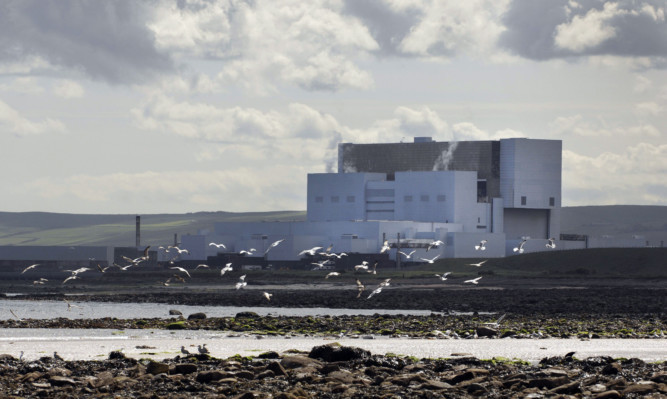Torness nuclear power station will have its life extended by seven years, operator EDF Energy has announced.
The facility, near Dunbar in East Lothian, had been due to close by 2023 but will now be operational until 2030.
The power station started operating in 1988 and now employs 550 full-time staff plus around 180 contractors.
Its two nuclear reactors generate enough electricity to power more than two million homes, according to the French firm.
The company is also extending generation from three other nuclear power stations across the UK, Heysham 1 and 2 in Lancashire and Hartlepool on the north-east coast of England.
It also owns the Hunterston B facility in North Ayrshire, which is due to close by 2023.
Chief executive Vincent de Rivaz said: “Our continuing investment, our expertise and the professional relationship we have with the safety regulator means we can safely prolong the operating life of our nuclear power stations.
“Their excellent output shows that reliability is improving whilst their safety and environmental performance is higher than ever.”
Scottish ministers support the life extension of existing nuclear power stations in the short term but are committed to the policy of no new facilities in Scotland.
A Government spokesman said: “The Scottish Government supports life extensions for existing nuclear power stations, where the environmental and safety requirements continue to be met, and we recognise the professionalism of the staff at Torness and Hunterston.
“Over the coming months we intend to continue to work towards an over-arching energy strategy, setting out priorities for the future energy system in Scotland.
“At a time when UK Government policy is causing other power stations in Scotland and across the UK to close prematurely and deterring investment in key renewables, we will continue to make the point to the UK Government that we are very concerned about the security of supply in Scotland, and the First Minister has previously raised this with the Prime Minister.”
EDF Energy is planning to build a new nuclear power station at Hinkley Point in Somerset but is still to make a final investment decision.
Richard Dixon, director of Friends of the Earth Scotland, said: “Nuclear power is the ultimate unsustainable form of energy, creating waste which needs to be looked after for 25,000 years.
“While disappointing, this announcement is hardly a surprise, everyone who knows anything about energy has been expecting this announcement for a decade.
“EDF have announced the life extension for Torness today because they are trying to distract attention from their terrible financial performance and their repeated failure to make a final decision on whether to build the Hinkley Point reactors in Somerset.
“Nuclear power is on its last legs in Europe and Hinkley will probably never get built.”
